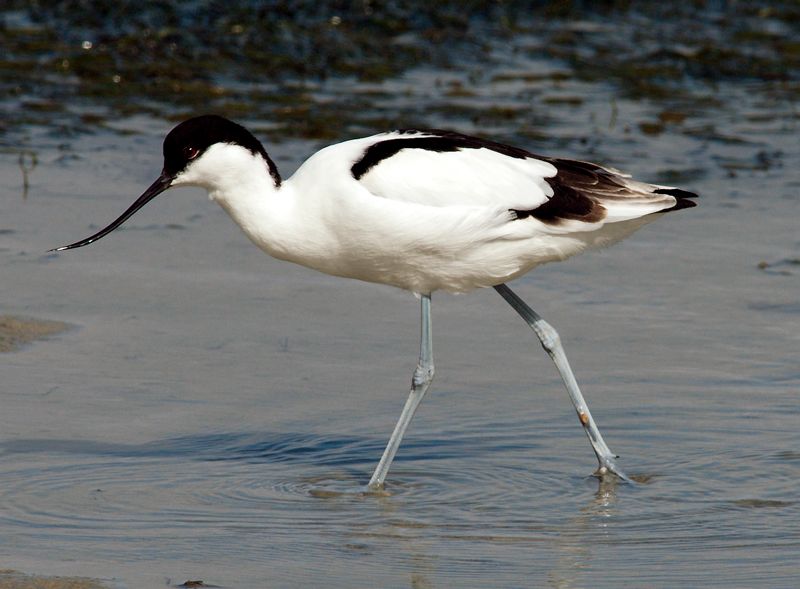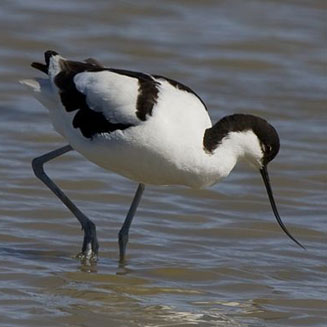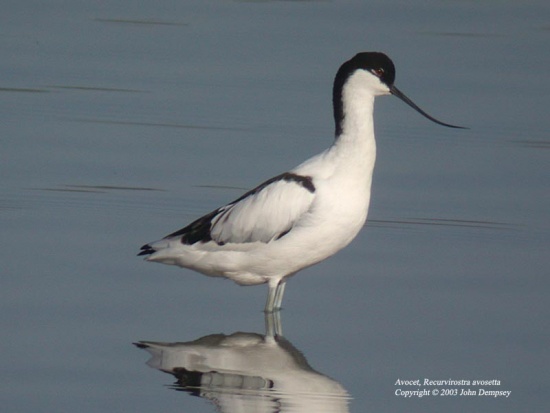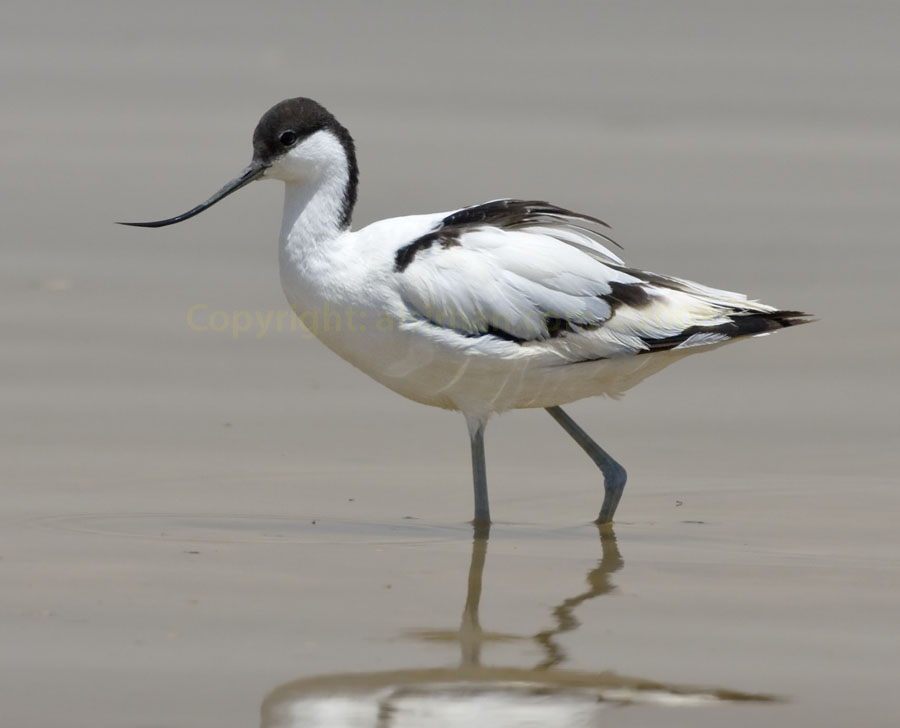
Recurvirostra avosetta
SUBFAMILY
Recurvirostrinae
TAXONOMY
Recurvirostra avosetta Linneaus, 1758, Italy. Monotypic.
OTHER COMMON NAMES
English: (Eurasian) avocet; French: Avocette йlйgante; German:
Sдbelschnдbler; Spanish: Avoceta Comъn.
PHYSICAL CHARACTERISTICS
16.5–17.7 in (42–45 cm); 7.9–14 oz (225–397 g). Distinctive,
black, strongly upcurved bill and long-blue gray legs. Plumage
white with black forehead, crown to beneath eyes and nape and
upper hindneck. At rest has three black bands on mantle and
wings. Female bill shorter with stronger curve. Juvenile resembles
adult but black plumage tinged brown and white upperparts
have brown or gray mottling.
DISTRIBUTION
Europe through western and central Asia to southeastern
Siberia and northeastern China, through northern Africa to
eastern and southern Africa. Winters from western Europe and
Africa through Middle East to northwestern India and southeastern
China.
HABITAT
Breeds in dry and sparsely-vegetated flat, open areas, usually
shallow saline lakes, lagoons and estuaries, up to 9,840 ft
(3,000 m). Outside of breeding season found in muddy tidal
flats, rarely at freshwater lakes and rivers.
BEHAVIOR
Gregarious, engages in elaborate mating ceremony. Adults give
“broken wing” display to distract predators from young. Makes
frequent clear flutish calls of “kluit, kluit.”
FEEDING ECOLOGY AND DIET
Mostly feeds by picking, also scything, takes variety of aquatic
invertebrates. Winter diet dominated by worms, will feed by
sight on the siphons of mollusks. Sometimes feeds communally.
REPRODUCTIVE BIOLOGY
Breeds April through August, nests in large colonies. Nest is a
grass-lined depression in open ground or short vegetation.
Lays three to five eggs, brownish with dark spots or blotches.
Incubation 23–25 days, by both sexes, fledging 35–42 days.
Conspecific nest parasitism documented, parasitic eggs laid
earlier in the season into nests of other pied avocets. Known to
have lived over 24 years in the wild.
CONSERVATION STATUS
Not threatened. Has rebounded from range contraction in
northwestern Europe in 1800s, number of breeding pairs in
Europe estimated at 31,000–56,000 with greatest numbers in
Denmark, Netherlands and Spain. Less opportunistic than
other recurvirostrids, this is cause for concern as pressure on
wetland habitat increases due to lack of protection and contamination
from pollutants including selenium.
SIGNIFICANCE TO HUMANS
During successful conservation effort of early 1900s in Europe,
the pied avocet was adopted as the Royal Society for the Protection
of Birds’ symbol, and the image is strongly associated
with ornithological conservation.
Photo Gallery of - Pied avocet




 Animalia Life
Animalia Life